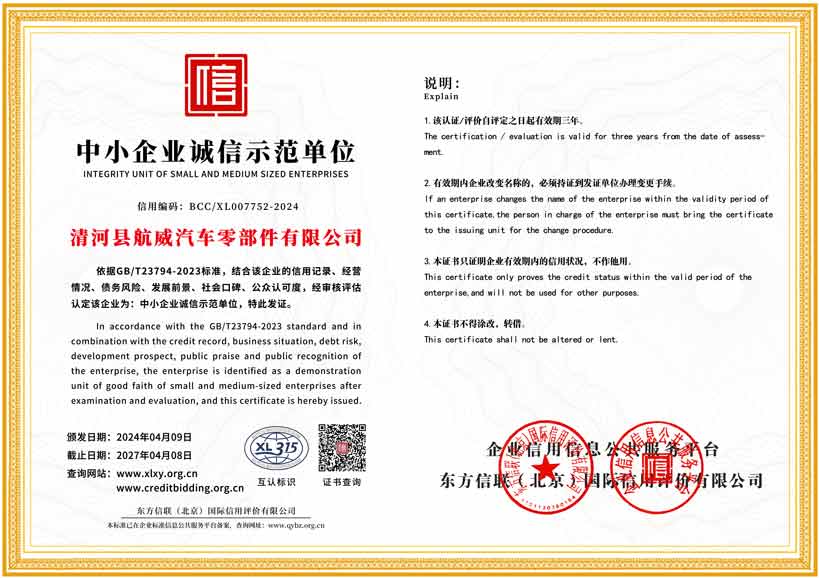cable assy clutch
Understanding the Cable Assembly Clutch A Vital Component in Modern Mechanisms
In the world of machinery and automotive engineering, the importance of reliable components cannot be overstated. Among these components, the cable assembly clutch plays a crucial role in ensuring smooth operation and functionality in various systems. This article delves into the mechanics, applications, and significance of cable assembly clutches, emphasizing their necessity in both automotive and industrial settings.
What is a Cable Assembly Clutch?
A cable assembly clutch refers to a mechanism where a series of cables are employed to engage or disengage the clutch of an engine or machinery. Clutches are essentially devices that allow for the transmission of rotational power from one component to another while enabling the disconnection of power when necessary. The cable assembly serves as the link between the operator—typically a driver or machine controller—and the clutch system, transmitting force to initiate or terminate engagement.
Cable assemblies in clutches are usually made up of durable materials designed to withstand tension and fatigue. They are equipped with a protective casing that prevents wear and tear from environmental factors, enabling them to perform optimally in varied conditions.
Mechanism of Operation
The operation of a cable assembly clutch is relatively simple yet effective. When the driver or operator pulls on the clutch cable, the tension created causes the clutch plate to engage or disengage. This action can control the connection between the engine and the transmission system, allowing for a seamless transition between gears in vehicles or machinery.
In automotive applications, for instance, when a driver presses the clutch pedal, the connected cable pulls the clutch fork, which then allows the clutch disc to separate from the flywheel. This disconnection is essential for changing gears without grinding the transmission. Conversely, releasing the pedal allows the clutch to engage, forming a solid connection that transmits power from the engine to the wheels.
Applications of Cable Assembly Clutches
Cable assembly clutches are predominantly used in various vehicles, including cars, motorcycles, and commercial transport. They are especially prevalent in simpler transmission systems, such as those found in older models and smaller vehicles. Furthermore, cable clutches are widely utilized in industrial machinery where precise control over machinery operation is required.
cable assy clutch

The versatility of cable assembly clutches also extends to recreational vehicles, lawnmowers, and equipment like go-karts and ATVs. In these applications, the clutch system allows for enhanced control, providing operators with the ability to manage speed and torque effectively.
Advantages of Cable Assembly Clutches
One significant advantage of cable assembly clutches is their simplicity and ease of maintenance. With fewer moving parts compared to hydraulic systems, they can be easier to fix and adjust. Additionally, they require less fluid management, reducing the risk of leaks and fluid-related issues. This simplicity can lead to lower costs in both parts and labor.
Another benefit is the customizable length of the cables which allows for tailored adjustments depending on the specific needs of the vehicle or machinery design. As each application can have unique space constraints and ergonomic considerations, the flexibility of cable lengths ensures better adaptability.
Challenges and Considerations
Despite their advantages, cable assembly clutches also face challenges. One common issue is the wear and tear of the cables over time, which can lead to loss of engagement or slipping. Regular inspections and maintenance are vital to ensure the integrity of the cables. Additionally, the response time of a cable-operated clutch may not match that of hydraulic equivalents in high-performance applications where speed and precision are critical.
Moreover, environmental factors such as dirt, moisture, or extreme temperatures can impact performance. Thus, adequate sealing and protection measures are crucial for maintaining the longevity and reliability of cable assembly clutches.
Conclusion
The cable assembly clutch is an essential component across various vehicles and machinery, providing control, reliability, and adaptability. As technology advances, there will likely be improvements in materials and design that enhance the performance and durability of these systems. Understanding the function and importance of cable assembly clutches not only highlights their role in modern machinery but also emphasizes the intricate balance of engineering that keeps our vehicles and equipment running smoothly. Whether in everyday cars, motorcycles, or specialized industrial machines, the cable assembly clutch remains a significant innovation in mechanical engineering.
-
Upgrade Your Vehicle with High-Quality Handbrake CablesNewsNov.01,2024
-
Optimize Your Bike's Performance with Quality CablesNewsNov.01,2024
-
Enhance Your Vehicle's Performance with Quality Clutch ComponentsNewsNov.01,2024
-
Elevate Your Vehicle's Performance with Quality Throttle CablesNewsNov.01,2024
-
Elevate Your Vehicle's Performance with Quality CablesNewsNov.01,2024
-
Affordable Solutions for Your Cable NeedsNewsNov.01,2024
